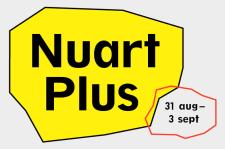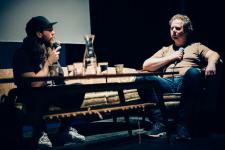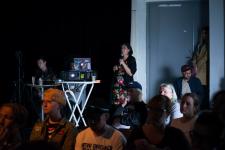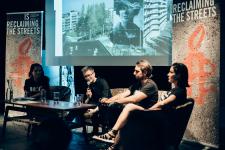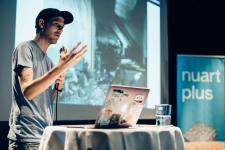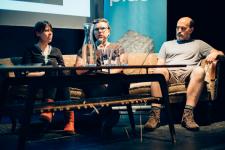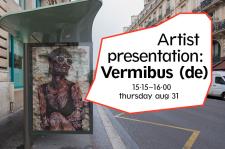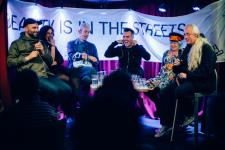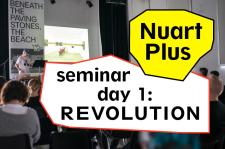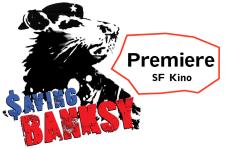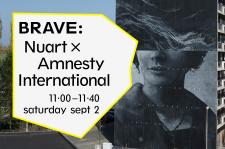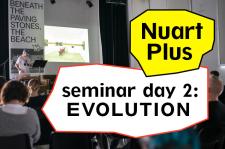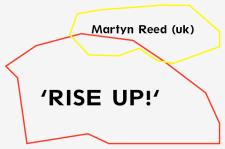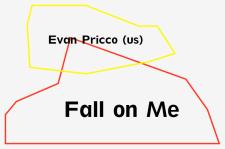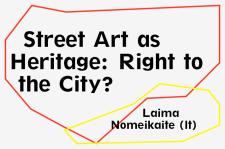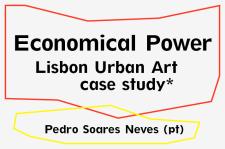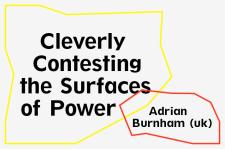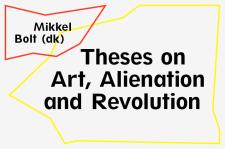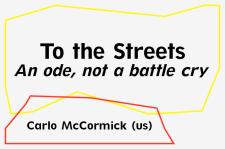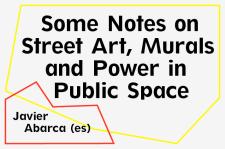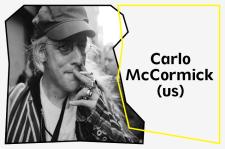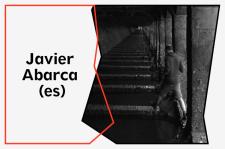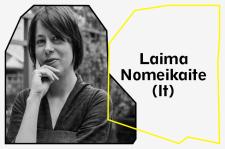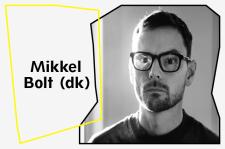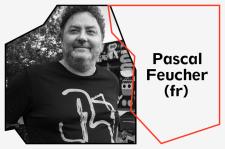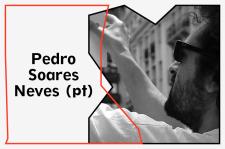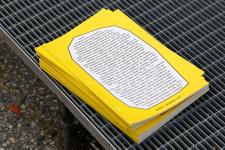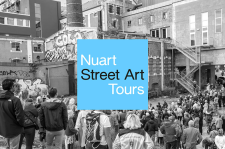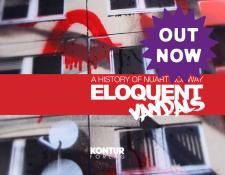
CLEVERLY CONTESTING THE SURFACES OF POWER
The material surfaces of towns and cities index legal, civic and corporate influence. With rampant privatisation these last two seats of power coalesce into a regime that proposes and propels corporate capitalism as the only socio-economic option available.
However, in the UK and elsewhere, recently we’ve seena substantial and growing number of people hungry for analyses of the flaws of neoliberal governance. In ways that were almost unimaginable even a year ago, a contemporary democratic socialist and/or communitarian conscience appears to be gaining traction. Although, in this era, when it is perfectly possible to imagine oneself connected and active without ever leaving the purview of a screen, ‘real’ or material, physical interventions calling for social conscience, needling for change or simply helping viewers to see the world afresh can take on enhanced significance.
As cultural anthropologists Megan McLagan and Yates McKee (2012) put it in their book Sensible Politics: The Visual Culture of Nongovernmental Activism:
“Material networks are important because they shape the nature of cultural forms that travel along them, but also because, like platforms, they are political actors themselves. Politics does not lie within the image, as if the only political exchange at stake is lodged in the […] ability to decode a meaning that inheres in the text. Rather the modes of circulation and of making public are forms of political action in and of themselves.”
While corporate culture continues its creeping grip on education, health, the news, entertainment and our personal and collective consciousness, opportunities to express views outside the narrow confines of the established political order are diminished.
Like Nuart the flyingleaps project seeks to offer a material platform and critical, enduring digital media presence for artists and visual activists. Making space for alternate ‘voices’: those who resist. As Chris Hedges wrote in Days of Destruction, Days of Revolt (Hedges and Sacco: 2012)the ‘[D]oubters, outcasts, artists, renegades, skeptics, and rebels – rarely come from the elite. They ask different questions. They see something else: a life of meaning. They have grasped Immanuel Kant’s dictum, “If justice perishes, human life on earth has lost its meaning.”’
And it’s the multiplicity of voices, tactics, the range of visual languages employed as well as inventive siting and enactment of art and visual activism that lends it a strength, that affords it a much better likelihood of breaking through to, effecting a publics’ concerned awareness – publics plural because urban dwelling is an agglomeration of many ideas and mentalities – arguably sometimes even to the extent that visual engagement translates into action.
Whilst I think some work on the more radical end of the art/visual activist spectrum is brilliant at skewering government wrongs or exposing corporate cant and abuses of power what the activist art rebels have to do – and I know the best do this constantly – is consider the efficacy of their message. Is it managing to get anywhere close to reaching those who are not already persuaded? Humans for the most part are not simplistic. We thrive on and evince a multitude of ideas and practices.
Take, for example, the Artist Taxi Driver (aka artist/activist Mark McGowan): his practice consists of serious sociological interviews, comical interventions, vituperative rants, practical support and involvement, collaboration with popular music and producing ‘naïve’ watercolours (which themselves are incredibly varied)… The point being he is all these things (and more besides) and we’re all, for the most part, similarly complex. That’s why the critical visual art we make needs to appear in various forms, work in various ways to at least have the potential to affect us in differing registers.
American architect, urbanist, writer and teacher Keller Easterling (2014) observes in Extrastatecraft that the declarative and enacted approaches to activism are to an extent bound together and complimentary. She cautions, however, that too glib a reliance on any declarative ‘us versus them’ rhetoric completely misses the mark in terms of effective dissent in contemporary political work. Worse, it plays into the hands of excessive power and wealth because more and more the means by which the ‘1%’ maintain control is extremely sophisticated. ‘Righteous ultimatums or binaries of enemies and innocents that offer only collusion or refusal might present a structural obstacle greater than any mythical opponent’ such as Capital, Empire or Neoliberalism. Adopting merely a simplistic oppositional stance lets big business, government and the sophisticated mechanisms of global capitalism off the hook.
Many powerful players that […] activists oppose maintain fluid or undeclared intentions by saying something different from what they are doing. It is easy to toy with or trick activist resistance if declaration is all that qualifies as information. When targeted, the powerful wander away from the bull’s-eye, arranging for shelter or immunity elsewhere. They may successfully propagate a rumor (e.g., that there is evidence of WMD, that climate change is a hoax, that Obama is not a US citizen) to capture the world’s attention.
Capturing attention to divert attention. Vested interests are ever cloaking themselves in the mantle of resistance. The commercial construction sector negotiating to build quotas of ‘social housing’ – inadequate in the first place or, as we’ve seen recently in the fallout from the tragedy of Grenfell Tower, a blatant con – or the thrust to privatise services, schools, the pushing through 24/7 of access to health is ideology in the guise of reform. Mainstream media plays the same surrepticious game. Witness, for instance, the cynical volte-face of a Murdoch press now loudly ‘supporting’ breast cancer awareness.
Easterling’s concern is to unearth and explore ways that publics might counter the power of global infrastructure but her proposed co-option of extra state craft in support of radical reform has other elements that accord with thinking and practice that stands a better chance of being productive. ‘[…] Techniques that are less heroic, less automatically oppositional, more effective, and sneakier – techniques like gossip, rumor, gift-giving, compliance, mimicry, comedy, meaninglessness, misdirection, distraction, hacking, or entrepreneurialism.’
Leaving open the question as to whether and how directly socio-politically engaged art and visual activism speaks to social justice, what does occur from time to time is a work – image, text, installation, T-shirt, performance, street poster... – can challenge and even help to alter the publics’ disposition. Here, in part, resides the value of turning our urban environment into a platform for artists: it’s an opportunity to visually delight but also a chance to question, maybe even shift shared beliefs, ideas and ethical concerns operating across society.
NUART PLUS 2017 PROGRAM
Our at-a-glance program of keynote speeches, presentations, panel debates and workshops
Nuart Plus 2017 – Jan Zahl in conversation with Ian Strange
(VIDEO) Artist Ian Strange discusses his career and work to date with Jan Zahl, Arts Editor at Stavanger Aftenblad newspaper.
Nuart Plus 2017 – Promises not kept: Art, the art institution and social change
(VIDEO) Keynote speech by Mikkel Bolt (DK)
Nuart Plus 2017 – Revolution, From the Artist’s Perspective
(VIDEO) Artist presentations by Carrie Reichardt (UK) and Igor Ponosov (RU) followed by a Q&A session with Evan Pricco (US).
Nuart Plus 2017 – From Cairo: I Know Why the Caged Birds Sing
(VIDEO) Artist presentation by Bahia Shehab (EG)
Nuart Plus 2017 – Brave – Nuart × Amnesty International
(VIDEO) Brave: Nuart × Amnesty International present the case of Human Rights activist Sakris Kupila
Nuart Plus 2017 – DIY Culture & New Utopias + Panel debate
(VIDEO) Presentations by Adrian Burnham (UK), Pascal Feucher (DE) and Addam Yekutieli aka Know Hope (IL) Followed by a panel debate led by Carlo McCormick
Nuart Plus 2017 – Creating New Cultural Heritage and "Rights to the City"
(VIDEO) Creating New Cultural Heritage and "Rights to the City"
Presentations by Laima Nomeikaite (LT), Javier Abarca (ES), Emma Arnold (CA) and Susan Hansen (UK)
ARTIST PRESENTATION BY VERMIBUS (DE)
Join Berlin-based ad-buster and artist Vermibus for a multimedia presentation about his unique brand of activism.
FIGHT CLUB - REVOLUTION OR EVOLUTION
The latest installment of Nuart’s legendary Fight Club, established in 2012 as a way to introduce difficult topics in a more relaxed environment condusive to publ...
JAN ZAHL (NO) IN CONVERSATION WITH IAN STRANGE (AU)
Artist Ian Strange discusses his career and work to date with Jan Zahl, Arts Editor at Stavanger Aftenblad newspaper
SEMINAR DAY 1 : REVOLUTION
Join us for Day 1 of the Nuart Plus program, all events are free unless otherwise stated
SAVING BANKSY (SCANDINAVIAN PREMIERE)
The film that asks the question: ‘What would you do if you woke up one morning and found a million dollar Banksy spray-painted on the side of your building?’
BRAVE : NUART x AMNESTY INTERNATIONAL PANEL DEBATE
Nuart x Amnesty International present the case of Human Right's activist Sakris Kupila
SEMINAR DAY 2 : EVOLUTION
Join us for Day 2 of the Nuart Plus program, all events are free unless otherwise stated
TRAFO WORKSHOP WITH CARRIE REICHARDT (UK)
Take part in a unique mosaic workshop with artist Carrie Reichardt - and produce an outdoor mural at this year’s Nuart Festival!
RISE UP!
Essay by Nuart founder and curator Martyn Reed that sets the theme and tone of this years event
THE RIGHT TO WRITE THE CITY: BREAKING THE LAW OF UNTOUCHABILITY
by Susan Hansen
ECONOMICAL POWER – LISBON URBAN ART CASE STUDY
By Pedro Soares Neves
SOME NOTES ON STREET ART, MURALS AND POWER IN PUBLIC SPACE
By Javier Abarca
CARLO McCORMICK (US)
Pop culture critic, curator and Senior Editor of PAPER magazine
EMMA ARNOLD (CA)
Cultural geographer and doctoral research fellow at the Department of Sociology and Human Geography, University of Oslo
JAVIER ABARCA (ES)
Artist, researcher and educator in the fields of graffiti and street art
LAIMA NOMEIKAITE (LT)
City planner and human geographer, engaged at The Norwegian Institute for Cultural Heritage Research (NIKU) since 2016
MIKKEL BOLT (DK)
Art historian and political theorist, employed as a lecturer in cultural history at the Department of Arts and Culture, University of Copenhagen
PASCAL FEUCHER (FR)
Founder and manager of Urban Spree in Berlin, Germany
PEDRO SOARES NEVES (PT)
Researcher, designer, urbanist and co-creator of Lisbon Street Art & Urban Creativity international research topic
SUSAN HANSEN (UK)
Convenor of the Visual Methods Group and Chair of the Forensic Psychology Research Group in the Department of Psychology at Middlesex University, London


